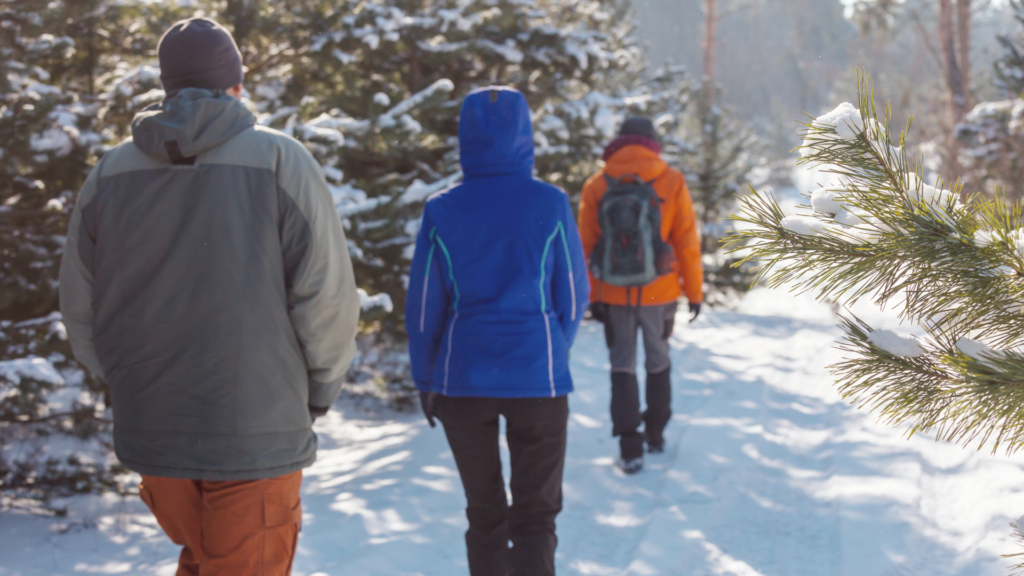There’s no denying that traveling in the winter can be difficult. It’s a challenge that many dreams of overcoming, but is the real deal worth it? Well, it depends on who you ask. Some adventurers believe that it’s the perfect season to visit unknown places. Others go as far as calling it the “best season to travel” because there are plenty of advantages.
The season can bring festive cheer to any trip, and it’s not as cold as you might think it is. If you’re considering a trip during these months, be sure to continue reading below. We’ve put together a guide that highlights some of the most important things to keep in mind while traveling.
Check the Weather Forecast
When traveling during winter, it’s crucial to check the weather forecast ahead of time. This step provides valuable insights into what to expect regarding temperature and potential snowfall, enabling you to pack the right clothing and gear for your journey. Understanding the forecast is not only about planning for the cold; it’s also a means to stay informed about significant Weather Alerts like snowstorms or icy roads, ensuring your safety against natural hazards. Moreover, a pre-trip weather check helps you plan your activities accordingly. Whether it’s skiing, sledding, or snowshoeing, knowing the weather conditions in advance allows you to make informed choices and maximize your enjoyment.
Prepare Your Vehicle for Winter Travel
Before setting off on a winter journey, it’s essential to prepare your vehicle for the challenging conditions ahead. First, check that your car battery is in good condition, as cold weather can weaken its power. Also, you may need to assess the tread depth of your tires and consider switching to winter tires for a better grip on snow and ice. Besides, it is advisable to equip your car with a winter emergency kit, including essentials like a snow brush, ice scraper, jumper cables, sand or cat litter for traction, and a shovel. Additionally, you can also keep a bag of rock salt or ice melt in your vehicle to help clear snow and ice from your car and the surrounding area.
Plan Your Route
When traveling in winter, it is important to plan your route. Consider the time it will take to travel and the roads you will be taking. Plan for any potential delays because of inclement weather or other circumstances. Check for state and local road closures or hazardous conditions. Plan stops along the way to prevent fatigue and ensure safety. Look into alternative routes if the weather is severe. Inquire into local laws and updates that may affect your travel and plan your route. Pack adequate supplies in case of an emergency. These items may include an emergency kit, a first-aid kit, warm clothing, a source of light, snacks, and a charged mobile phone.
Give Yourself Plenty of Time to Get To Your Destination
Give yourself plenty of time to get to your destination when traveling in the winter. Inclement weather can slow you down if you are on a highway or other major thoroughfare. Check the forecast for weather and poor conditions where you’ll be traveling. Plan for longer trips because of things such as snowfall or freezing rain. It could take you hours longer than you expected to get to your destination. Have a few alternatives in mind in case your route becomes impassable. Have a charged cell phone and your travel information, like confirmation numbers, accessible in case you need to contact anyone. Driving is a must because of road conditions. Obey all traffic laws and regulations which are even more important during these winter months. Lastly, plan for extra time when traveling in winter, so you make it to your destination safely and on time.
Dress Warmly and in Layers
When traveling in winter, dressing warmly and in layers is essential to staying comfortable and safe. Wearing multiple thin layers is far more effective at retaining heat than one thick layer. Start with a light base layer made of a material that wicks away moisture, such as polyester, followed by a mid-layer such as fleece or wool.
They should also make outer layers from water-resistant materials, such as Gore-Tex, to keep you dry in wet conditions. A hat and scarf that cover your head and neck will stop any warm air you create from escaping, and a well-insulated pair of waterproof boots will keep your feet both dry and warm. Finally, even if the temperature isn’t below freezing, choose accessories such as gloves and an umbrella to ensure they properly prepared you for any weather.
Be Prepared for Changes in Your Plans
When planning for a winter trip, it is important to keep in mind the possibility of changes in plans. Throughout the winter, Mother Nature can be unpredictable, so it is best to expect the unexpected. Preparing for the unexpected ensures a more enjoyable trip. For example, ensuring that materials such as a hoodie, spare gloves, and an umbrella have been packed is essential. Additionally, having an alternate plan in case of inclement weather can also keep travel stress-free. Having reliable transportation is also essential.
Having a vehicle that can handle snow and ice is important to stay safe and make it to each destination with ease. Additionally, having warm clothing and blankets available in the car could prevent the need to stop in unknown places in case of an emergency. All of these tips can help ensure that a winter trip is successful and that changes in plans can be planned more effectively.
Plan Your Winter Travels to Ensure a Safe and Enjoyable Trip
Overall, winter travel can be a wonderful experience, but it is important to remember a few key things when planning your winter-time journey. Be sure to ensure that your clothing, lodging, and vehicle are adequate for the winter conditions. Have the proper emergency supplies on hand to stay safe and warm. With these few things in mind, plan your winter travels to ensure a safe and enjoyable trip! Take the time to research your travel destinations and check the weather forecast before planning each leg of your journey.
Was this article helpful to you? If so, please keep reading for more great content.

